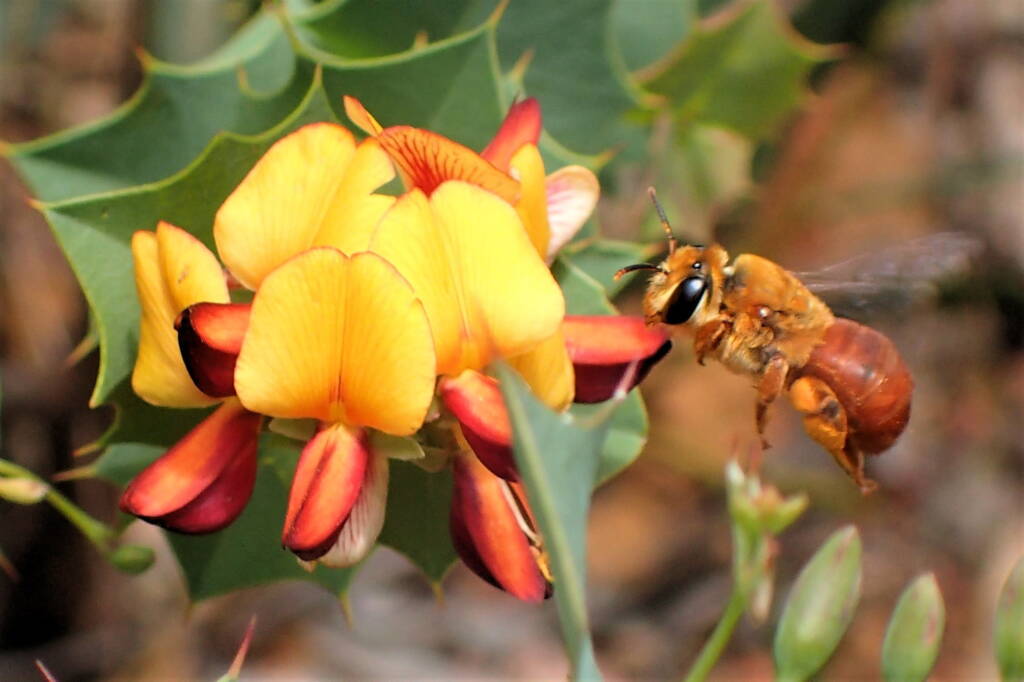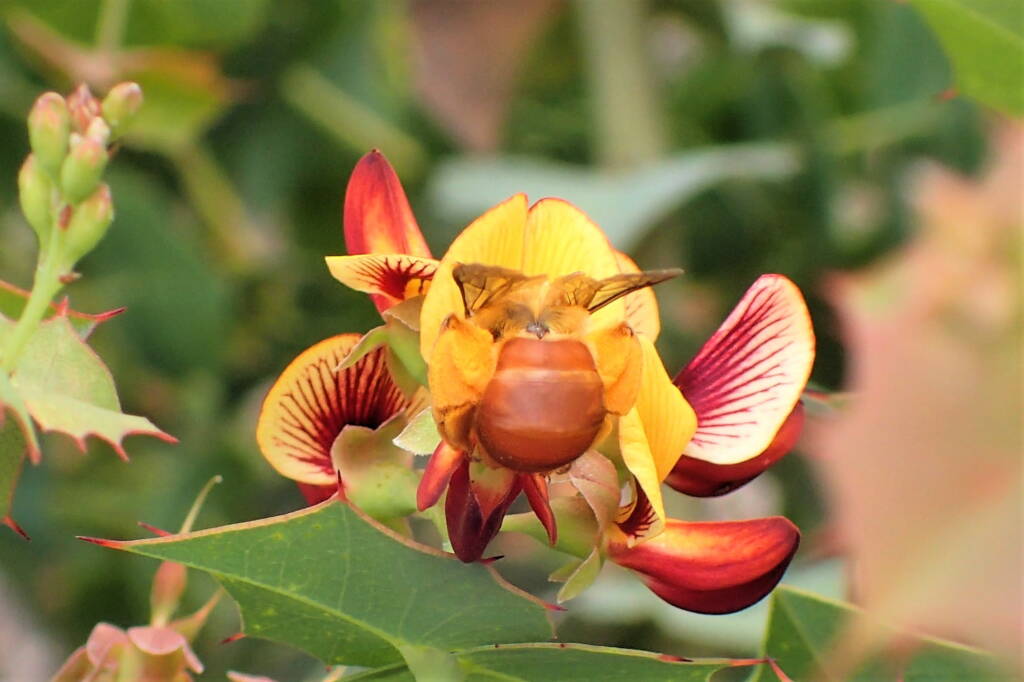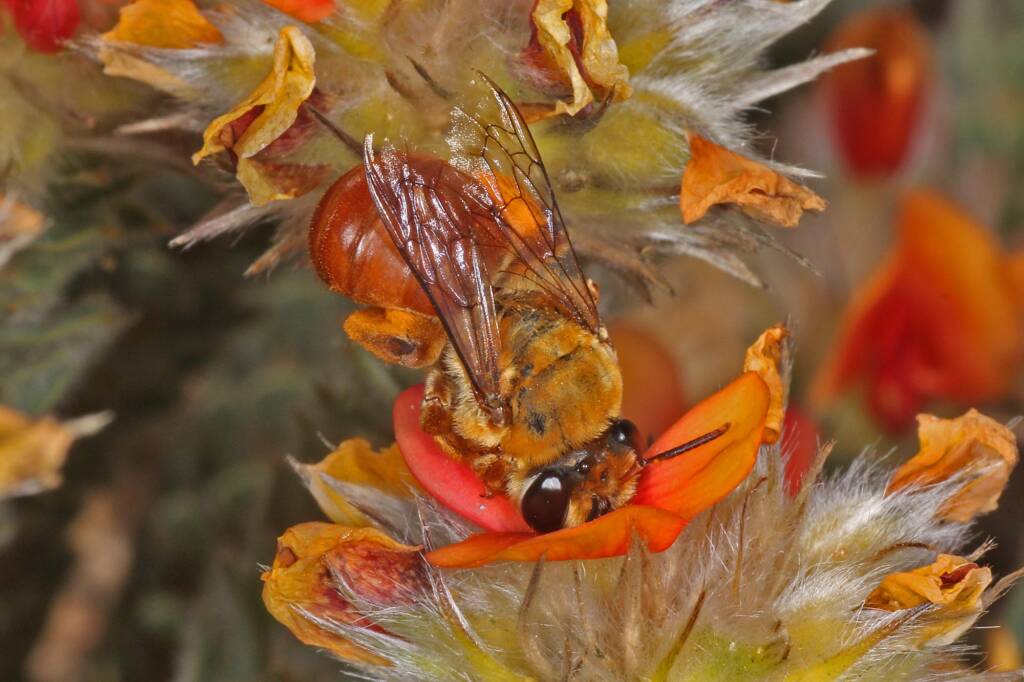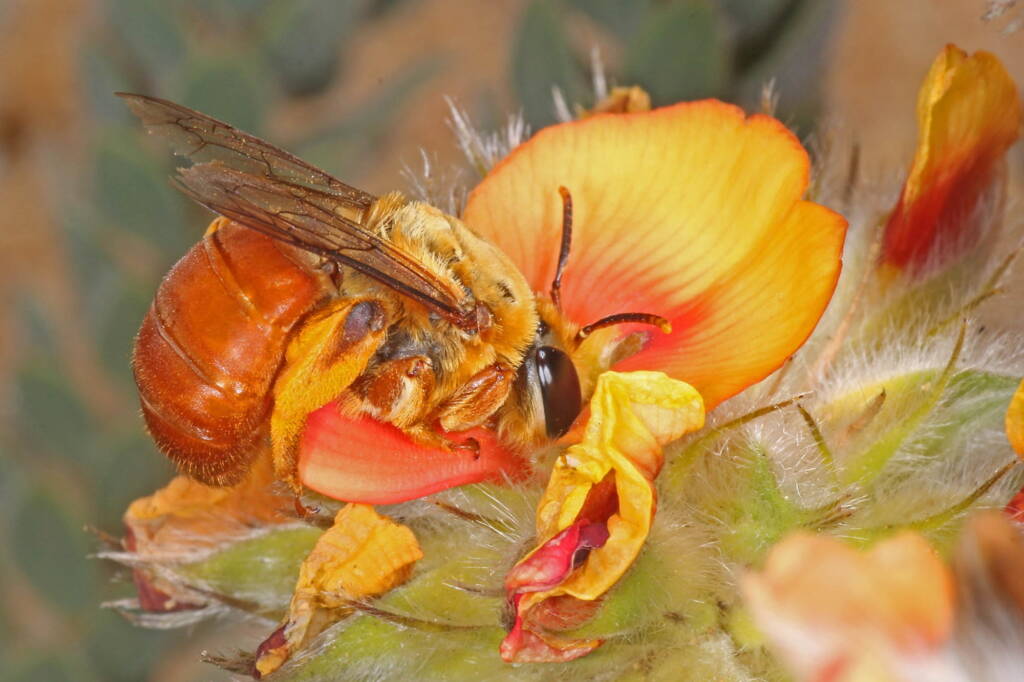TrichocolletesTrichocolletes dives Trichocolletes orientalis Trichocolletes pulcherrimus Trichocolletes rufibasis
Images and Author Gary Taylor ◦
Windy, cloudy crappy day for bees, but not as windy and crappy as the two previous days and it’s my last day off before work starts again so with little hope of finding anything, let alone anything new, (doesn’t matter, I just need a bush run…) we set off… So, not expecting to see much I was stoked to be in the right place at the right time when this big gorgeous girl popped in 😃
I was to find out that she is a Trichocolletes pulcherrimus.
Author Gary Taylor

Pulcherimus is from the Latin “pulcher” meaning ‘beautiful”. Pulcherimus is the superlative and means “The most beautiful”.
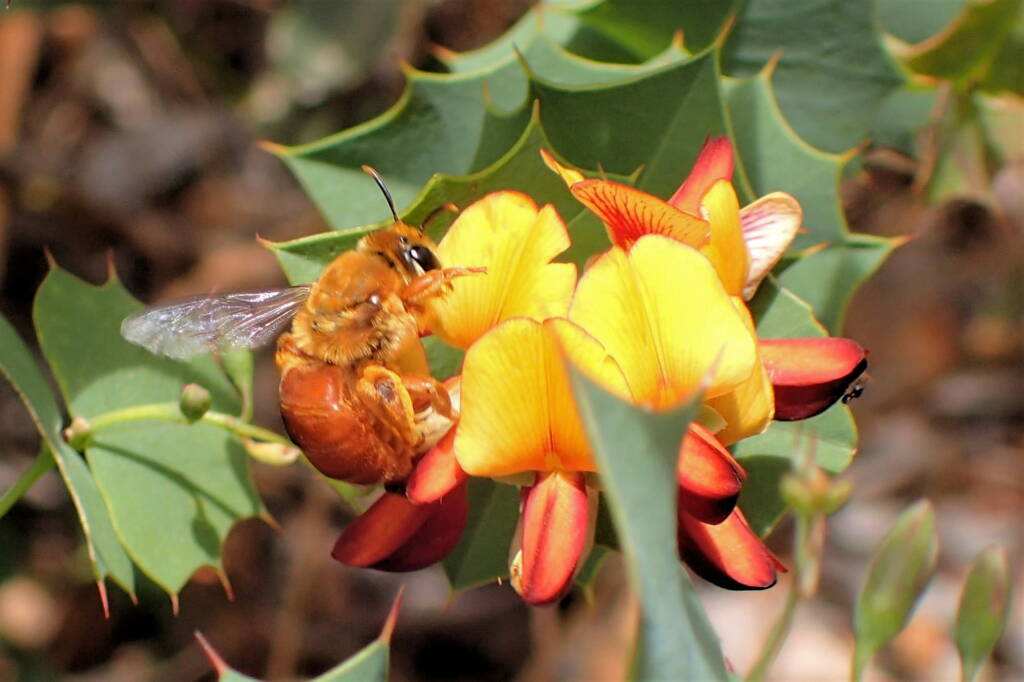
The basitibial area of the female is characteristic to this sex, as well as we can see of the fore wing. The eyes are not hairy, as evident on the photos. The metasoma orange brown, not too many. As we cannot see lateral black marks on T2, it can be said to be a female Trichocolletes pulcherrimus Michener.
Source: Roch Desmier de Chenon
Remarks. Detailed descriptions can be found in Michener, 1965. In 1965, Michener proposed division of the genus Trichocolletes into two subgenera, with this species as the sole member of the subgenus Callocolletes. At that time, the Colletidae family was regarded as a primitive lineage, but molecular evidence now indicates that it is one of the more derived (Danforth et al., 2006) and that separation of Trichocolletes from other Australian colletids occurred relatively early (Almeida and Danforth, 2009). However, the premise on which the subgenus was based remains unaltered. If the hind basitibial area of T. pulcherrimus females is intermediate in nature between those found in the remaining Trichocolletes species and those of other colletids, it might indicate that T. pulcherrimus occupies a basal position within the genus.
Batley, Michael, and Terry F. Houston, 2012. Revision of the Australian bee genus Trichocolletes Cockerell (Hymenoptera: Colletidae: Paracolletini). Records of the Australian Museum 64(1): 1–50. [Published 23 May 2012].
Images and Author Marc Newman ◦

Trichocolletes (Callocolletes) pulcherrimus on Urodon dasyphylla. An old series from 2011, a GoBeeWA trip. The mission was to find a bee from the family Stenotritidae and were driving along The Great Eastern Highway looking for the turnoff to a granite outcrop where we knew a species from that family had been seen. We got lost and decided to pull up and have a look around. There were a bunch of these flowers in bloom and this bee was everywhere. Incredible luck and what a beautiful bee, I can’t believe I didn’t get around to posting before.
Author Marc Newman
- Scientific classification
- Kingdom: Animalia
- Phylum: Arthropoda
- Subphylum: Hexapoda
- Class: Insecta
- Informal: Pterygotes
- Order: Hymenoptera
- Superfamily: Apoidea
- Informal: Apiformes
- Family: Colletidae
- Subfamily: Neopasiphaeinae
- Genus: Trichocolletes
- Species: Trichocolletes pulcherrimus
Footnote & References
- Trichocolletes pulcherrimus, Photographs and content © Gary Taylor
- Trichocolletes pulcherrimus, Photographs and content © Marc Newman, Flickr, https://flickr.com/photos/koolbee/albums
- Batley, Michael, and Terry F. Houston, 2012. Revision of the Australian bee genus Trichocolletes Cockerell (Hymenoptera: Colletidae: Paracolletini). Records of the Australian Museum 64(1): 1–50. [Published 23 May 2012]. Australian Museum Scientific Publications, https://media.australian.museum/media/Uploads/Journals/24792/1589_complete.pdf
- Trichocolletes pulcherrimus Michener, 1965, Classification, Atlas of Living Australia, https://bie.ala.org.au/species/urn:lsid:biodiversity.org.au:afd.taxon:38537627-6cad-4fee-baad-bbc8eca597c7#classification
TrichocolletesTrichocolletes dives Trichocolletes orientalis Trichocolletes pulcherrimus Trichocolletes rufibasis
BeesBees Anatomy Bee Behaviour Blogging Bees… Bees – image index Amegilla Bee Apis mellifera Austroplebeia australis Austrothurgus Braunsapis sp Ceylalictus perditellus Colletidae Euryglossinae Exoneura Homalictus Hyleoides bivulnerata Lasioglossum Lasioglossum (Chilalictus) Lipotriches Megachile Meroglossa Stenotritidae Tetragonula Thyreus Xylocopa

